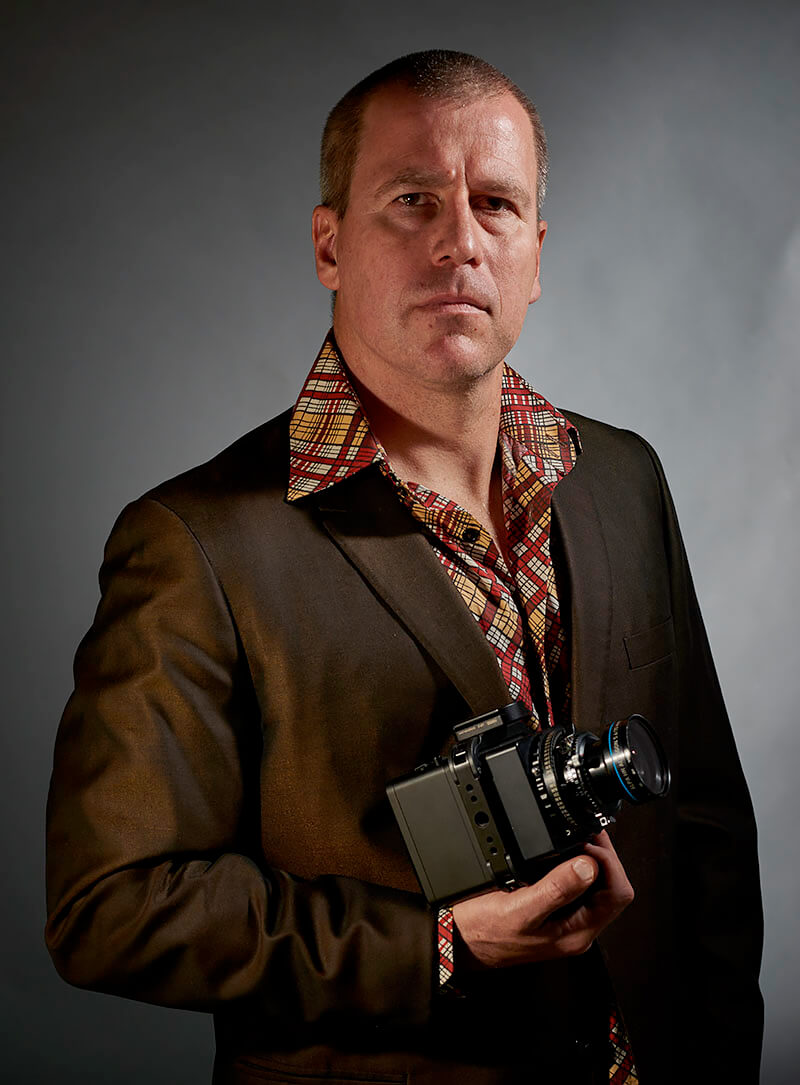Ian van Coller was born in 1970, in Johannesburg, South Africa, and grew up in the country during a time of great political turmoil. These formative years became integral to the subject matter van Coller has pursued throughout his artistic career. His work has addressed complex cultural issues of both the apartheid and post-apartheid eras, especially with regards to cultural identity in the face of globalization, and the economic realities of every day life.
Van Coller received a National Diploma in Photography from Technikon Natal in Durban, and in 1992 he moved to the United States to pursue his studies where he received a BFA from Arizona State University, and an MFA from The University of New Mexico. He currently lives in Bozeman, Montana with his wife, children, and three dogs, and is a Professor of Photography at Montana State University.
His work has been widely exhibited nationally and internationally and is held in many significant museum collections, including The Philadelphia Museum of Art, The Getty Research Institute, The Metropolitan Museum of Art, The Library of Congress, and The South African National Gallery. Van Coller's first monograph, Interior Relations, was published by Charles Lane Press (New York) in 2011. He is a 2018 Guggenheim Fellow and a member of the Piece of Cake collective.
Van Coller's most recent work focuses on environmental issues related to climate change and deep time. These projects have centered on the production of large scale artist books, as well as direct collaborations with paleo-climatologists.
About Naturalists of the Long Now
Climate change has compressed and conflated human and geologic time scales, making it essential to find ways to conceptualize “deep time.” My project, Naturalists of the Long Now, seeks to make notions of deep time comprehensible through visual exploration of glacier ice, as well as other earthly archives. Initially inspired by the 10,000 Year Clock Project of the Long Now Foundation, I have begun collaborating with scientists to make art that challenges viewers to think about the vast scales of geologic time-both past and future-that are recorded not only in the earth’s ice bodies, but in trees, sediments, corals and fossils.
Photography is a unique and powerful visual language. However, what that language sometimes lacks is the information needed to bring about understanding of what is represented in the photograph itself.
In 2015, I was able to accompany a team of geoscientists who specialize in climate science related to Quelccaya Glacier in Peru. I was astonished at the endurance of these men and women. Every day they would climb to the summit of the glacier at 18,600ft, and then work over 10 hours straight, drilling ice cores, digging snow pits, and collecting data. It would be exhausting work at sea level, let alone at altitude. I realized I really had a lack of understanding of what the scientists were trying to do. Where the symbolic conversations in my ice portraits ended, the deep knowledge of ice possessed by the scientists would sustain and expand it.
When I was a young person, I was fascinated by the annotated drawings and paintings of Victorian era naturalists, botanists and ornithologists. These brought together the two things I loved most in the world-art and nature. Since that expedition to Peru, I have started intimate collaborations with scientists by having them annotate directly onto my photographic prints-a contemporary taxonomy of ice and climate-thus re-inventing a genre of naturalist imagery.
Naturalists of the Long Now breaks down barriers between art and science, and creates a dialogue between text and image, landscape and viewer, expert and novice, past, present and future. My intention is that Naturalists of the Long Now is to encourage people to think in terms of longer spans of time, and consider what humanity will look like in 100 or even 10,000 years-instead of just considering our personal and immediate desires.
Article
Photography and Climate Change Awareness